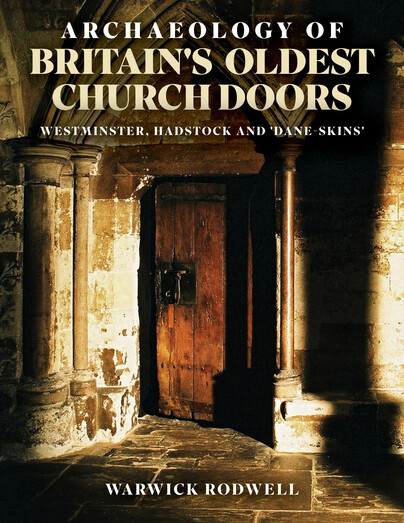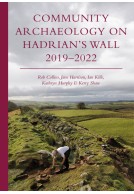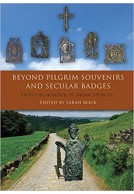Archaeology of Britain's Oldest Church Doors (Paperback)
Westminster, Hadstock and 'Dane-skins'
Imprint: Oxbow Books
Pages: 224
Illustrations: 150 colour illustrations
ISBN: 9798888572290
Published: 17th October 2025
Script Academic & Professional
Pages: 224
Illustrations: 150 colour illustrations
ISBN: 9798888572290
Published: 17th October 2025
Script Academic & Professional
You'll be £19.96 closer to your next £10.00 credit when you purchase Archaeology of Britain's Oldest Church Doors. What's this?
+£4.99 UK Delivery or free UK delivery if order is over £40
(click here for international delivery rates)
Order within the next 7 hours, 2 minutes to get your order processed the next working day!
Need a currency converter? Check XE.com for live rates
(click here for international delivery rates)
Order within the next 7 hours, 2 minutes to get your order processed the next working day!
Need a currency converter? Check XE.com for live rates
This book presents a detailed and fascinating study of the two oldest doors in England: in the chapter house vestibule at Westminster Abbey, which pre-dates the Norman Conquest (1050s) and the north nave door at Hadstock Church, Essex, dated to the 1060s–70s. The Westminster door was formerly covered with skin on both faces, which had been claimed as human, and variously attributed either to a Danish raider, or to the English merchant who instigated an audacious robbery in 1303 from the royal treasury, housed in the abbey cloister. The Hadstock door was notorious for its presumed great antiquity and the fact that its exterior had also once been covered with hide.
Remains of hides on church doors had also been reported by antiquaries at several other locations in England, since the mid-17th century. Again, they had all been claimed as human, and mostly attributed to pillaging Danes. There were several cogent arguments why this gruesome claim could not be true: first, all the skins were applied to the doors during construction and not attached subsequently; secondly, they post-dated the era of Danish incursions; thirdly, it was apparent that at least some of the skins were animal hides; fourthly, flaying was never a prescribed form of punishment in Church law or English civil law. Clearly, scientific investigations were needed to separate fact from fiction.
The application of dendrochronology made it possible to date the oak boards from which church doors were constructed. Architectural and archaeological evidence pointed to three doors as potential claimants for the status of being the oldest in Britain and dendrochronology ranked them in date order: Westminster Abbey, 1050s; Hadstock Church, 1060s–70s; and Rochester Cathedral, c. 1080s–90s. Developments in DNA studies made it possible to identify the animal species used for historic parchment and vellum documents and, by extension, for the hides on church doors. Few samples of these hides have survived to the present day but the Westminster and Hadstock coverings proved to be cow hide, and the skin from Copford Church, Essex is horse/donkey.
Having been responsible for archaeological investigations that involved the doors and their settings at Westminster and Hadstock, it seemed logical to bring them together, along with such evidence as could be gleaned about other early doors, especially known to have been covered with hide.
This book is concerned with more than just the hides. It considers the form and construction of the earliest surviving English doors. A surprising variety of techniques is displayed in the later 11th and 12th centuries, and the Westminster door is unique. Its form of construction is unmatched by any other recorded door in Britain. Are its origins Anglo-Saxon or Norman-French? Serendipitously, it also happened that two woodwork historians, Peter Massey and Paul Reed, undertook a detailed study of the construction method and tools required to fabricate the Westminster door, and a chapter has been devoted here to their findings.
Customers who bought this title also bought...
Other titles in Oxbow Books...
















